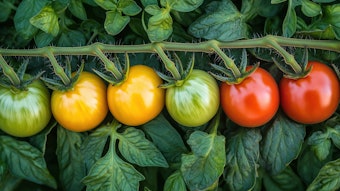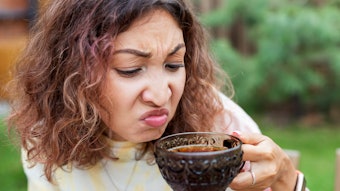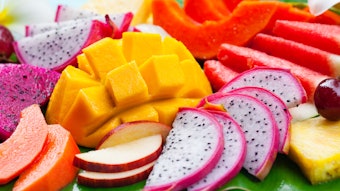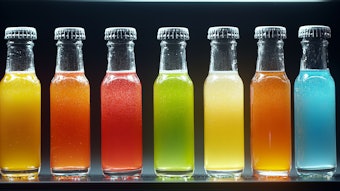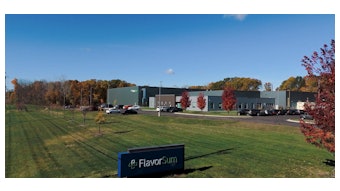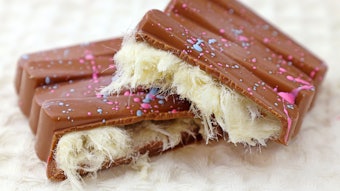
Vanilla has been one of the most popular flavors in the United States for many years with vanilla ice cream as the most recognizable and popular vanilla-flavored food. When consumers purchase ice cream labeled as “vanilla ice cream” they expect it to be flavored with vanilla flavoring derived from vanilla beans unless labeled otherwise. As we shall see, this expectation is codified in two U.S. federal standards of identity, one for vanilla flavorings and one for ice cream.
Adulteration of vanilla flavorings and foods containing them has long been a problem in the U.S. and there continue to be modern examples.4 In 2008, the Food and Drug Administration (FDA) published a consumer update warning U.S. consumers against purchasing a product manufactured in Mexico and labeled as “pure vanilla” because the “Mexican vanilla is frequently made with extract of beans from the tonka tree.”13 Such adulteration is of concern to the FDA not only because the product was being sold in ethnic stores in the US and did not meet the standard of identity for vanilla extract, but also because tonka bean extract is a source of coumarin, a substance banned for use in food in the US since 1954.13
Issues of adulteration seem to fluctuate in frequency with the supply and price of vanilla beans. For example, two severe supply and price dislocations occurred in the past fifteen years resulting from increased global demand and decreased crop availability in Madagascar, the world’s primary source of vanilla beans. In such instances there may be migration for economic reasons away from vanilla flavorings derived from vanilla beans that comply with the federal standard of identity. Non-compliant labeling for foods, including ice cream, may result. Recent increased emphasis on consumers’ desires for foods containing “natural” food ingredients has resulted in the exploration of vanilla flavoring alternatives that are not derived from vanilla beans.5
425 million gallons of vanilla ice cream are commercially produced annually in the U.S., comprising about 28% of the ice cream produced each year.
The regulations relevant to vanilla extract and vanilla flavorings are codified in the U.S. Code of Federal Regulations (CFR), and are supplemented by a formal FDA Advisory Opinion, and a collection of FDA-issued regulatory correspondence. The regulatory environment related to flavors can therefore be confusing, especially when the federal standards for vanilla flavoringsa and ice creamb are read with the labeling regulations for flavors and foods containing added flavors that are not subject to federal standards of identityc. However, clarity is possible with a careful reading and proper interpretation of the regulations. Two key points are:
- The federal standards of identity for vanilla flavorings at 21 CFR Section 169 and ice cream at 21 CFR Section 135, and their labeling requirements, take precedence over the general flavor and food labeling regulations at 21 CFR Section 101.22.
- The federal standard of identity for vanilla flavorings at 21 CFR Section 169 applies to both the flavorings sold directly to consumers and to food manufacturers.
This paper will review the statutory authority granted to FDA to promulgate standards of identity for food and the proper labeling of foods subject to standards, examine the US labeling regulations for flavors and foods containing flavors, examine the standards of identity for vanilla products and ice cream, address issues related to vanillin and spent vanilla beans, and finally, consider the appropriate analysis when determining proper labeling of vanilla flavoring or foods containing vanilla flavoring.
Vanilla Supply and Quantity
In addition to large-volume use in food manufacturing, vanilla flavorings, primarily vanilla extract, are the largest volume flavorings sold at retail in the U.S. vanilla extract is by far the most popular extract used in home cooking. Annual surveys have shown vanilla ice cream to be the long-standing favorite among American consumers. Approximately 425 million gallons of vanilla ice cream are commercially produced annually in the U.S., comprising about 28% of the ice cream produced each year. The second most popular ice cream flavor is chocolate comprising about 10% of annual ice cream production. But, vanilla is popular in more food products than just ice cream. Vanilla is in high demand for additional applications such as plant-based beverages like soy and almond milk, protein bars, yogurts and cereals.1
Vanilla (Vanilla planifolia Andrews and Vanilla tahitensis Moore) originated in Mexico where it was first cultivated. The vanilla orchid produces a fruit pod, the vanilla bean, which is the raw material for vanilla flavorings. The cultivation of vanilla is labor intensive, and outside of Mexico requires hand pollination of the orchid and consistent growing conditions. Today, a large majority of vanilla is imported into the U.S. as cured beans from the primary growing area of Madagascar with lesser amounts imported into the U.S. from Indonesia and a few other tropical countries. Vanilla is not cultivated in the U.S. although attempts have been made from time to time to cultivate vanilla in Hawaii and Puerto Rico.
The popularity of vanilla means that large volumes of vanilla beans must be imported into the U.S. annually to manufacture the large volume of vanilla extract and other vanilla flavorings produced in the U.S. According to statistics compiled by the U.S. Department of Commerce, T-1 shows whole vanilla beans imported into the U.S. in the following amounts over the past five years with the corresponding customs value and per kilogram cost noted:
Of the whole bean imports, imports from Madagascar varied between 70-80% of the total for these years. In 2012, the Commerce Department began reporting totals of “crushed or ground” vanilla beans and these totals are reported in F-1.
Prices for vanilla beans vary depending on supply and quality. In times of extreme shortages when, for example, severe typhoons destroyed significant portions of the Madagascar vanilla crop, prices have risen to over five hundred dollars per kilogram depending on quality. Severe price and supply dislocations have historically coincided with changes in practices related to the composition and labeling of vanilla flavorings. For example, synthetic vanillin-based flavorings may be used to replace vanilla extract, or to adulterate vanilla extract in violation of the federal standard of identity, when ample supplies of reasonably priced vanilla beans are not available.
U.S. Federal Standards of Identity and the Proper Labeling of Foods Subject to Standards
Section 401 of the Federal Food, Drug, and Cosmetic Act (FFDCA) directs FDA through notice and comment rulemaking to establish standards for food where necessary to promote honesty and fair dealing in the interest of consumers. The authority granted by Congress to FDA enables the agency to combat an economic problem: the marketing of foods from which traditional constituents were removed or in which new or different (often cheaper) ingredients were substituted.17 As such, the federal food standards are not safety standards, but rather, as FDA explains, are intended to “protect consumers from contaminated products and economic fraud” and have served as “a trusted barrier against substandard and fraudulently packaged food since their enactment in the 1938 FFDCA.”12 Additionally, the federal food standards help create a “level playing field” environment “where competitors (can) not cut prices by selling inferior products.”12
Federal food standards allow consumers to trust that a standardized food is what it purports to be because they establish explicit specifications for the standardized food. A food standard typically defines the components of a food, listing both mandatory and any permitted optional ingredients as well as fixing the amounts or relative proportions of ingredients. Many food standards also prescribe a method of production. As such, the food standard regulation resembles a recipe for the standardized food. An additional and critical aspect of a food standard is its assigned common or usual name under which only conforming products can be sold. Once a food has a promulgated standard, only products that meet the compositional and applicable production requirements of the standard may be marketed under the food standard name. In other words, and strictly speaking, a food labeled with the name of the food that is subject to the standard must be composed of the ingredients specified in the standard.
As it relates to vanilla, FDA established a series of standards of identity for vanilla products promulgated at 21 CFR 169.175 – 169.182. The commercial landscape of vanilla products facing the agency at the time the vanilla standards were promulgated was one in which products purporting to be “vanilla extract” were often formulations including blends of vanilla beans with other flavoring components or mixtures of materials containing no vanilla bean at all.4 FDA’s standards for vanilla products were intended to alleviate potential consumer fraud by establishing specific requirements for vanilla extract and other standardized vanilla products. As such, the primary basis for the vanilla product standards, including for vanilla extract, is FDA’s definition of vanilla beans at 21 CFR 169.3(a):
“The term vanilla beans means the properly cured and dried fruit pods of Vanilla planifolia Andrews and of Vanilla tahitensis Moore.”
Both the foundation of the standard of identity for vanilla extract and the other standardized vanilla products at 21 CFR 169 and the basis of FDA’s efforts to eliminate consumer and economic fraud with respect to vanilla products requires, in addition to proper labeling in accordance with the standards, that standardized vanilla products be derived from fruit pods: 1) of specific botanical origin; and, 2) which are properly cured and dried.
No new standards of identity have been promulgated in recent years and existing standards have not been an area of particular enforcement emphasis for FDA as the agency has focused its limited resources on safety issues. However, FDA has clear statutory authority to take action against violations of standards of identity. The controlling section of the FFDCA is section 403(g) which states that a food is misbranded if there is a standard of identity in the regulation but the food does not conform to the standard. As such, a reading of the plain language of the statute suggests that a product which “purports to be or is represented as a standardized food either must meet the standard or it may not be sold as such."18 Given its clear statutory authority regarding food standards, a violation of a standard is a relatively simple enforcement action for FDA to take because proving a violation is usually quite easy – the agency need simply compare the product label with the composition of the product listed in the ingredient statement or as confirmed through appropriate analytical methods. A recent FDA enforcement action involving Hampton Creek, the plant-based food manufacturer of “Just Mayo,” provides an illustrative example.
Vanilla flavorings are the only flavoring materials subject to a federal standard of identity.
In August 2015, FDA issued a warning letter to Hampton Creek noting that, among other issues, “Just Mayo” was misbranded under section 403 of the Federal Food Drug and Cosmetic Act for two reasons: 1) Just Mayo’s label was false and misleading; and, 2) “Just Mayo” inappropriately purported to be a food for which a standard of identity has been established. First, FDA explained that the use of the term “mayo” in the product name and the image of an egg prominently positioned on the front label were misleading to consumers because they suggested that the product was the standardized food mayonnaise, which must contain eggs d. FDA also explained that using “Just” with “Mayo” seemed to qualify the product and “reinforce(d) the impression that the products are real mayonnaise by suggesting that they are “all mayonnaise” or “nothing but” mayonnaise.”16
Second, in addition to being misleading, FDA determined that “Just Mayo” was misbranded because the name of the product and imagery used suggested that the product was standardized mayonnaise. Indeed, a simple review of its ingredient statement demonstrated that “Just Mayo” did not contain eggs, a required ingredient in mayonnaise. Additionally, Just Mayo’s ingredient statement revealed that the product contained a number of other ingredients not permitted by the mayonnaise standard including: modified food starch, pea protein and beta-carotene. In this instance, Hampton Creek worked with FDA and modified its label to mitigate consumer confusion between “Just Mayo” and standardized mayonnaise by adding qualifying language on the front label to clearly differentiate “Just Mayo” from mayonnaise.
As a result of these label changes, the company was permitted to continue use of its “Just Mayo” brand name. However, this case demonstrates that allusion to a food with a federal standard on a food label through naming (even if the name is shorthand or a colloquial term for the standardized food) or imagery of mandatory ingredients is improper because it is misleading to consumers and renders the product misbranded under the FFDCA.
Federal standards were most commonly established for ready-to-eat foods such as peanut butter, bread, mayonnaise and ice cream, and generally not for a food ingredient that is not consumed as such and is only consumed after mixing with other food ingredients either in food production or in the home. Vanilla flavorings are the only flavoring materials subject to a federal standard of identity.
As noted above, in addition to the statutory authority for food standards, Congress also provided in FFDCA section 403 requirements for labeling standardized foods.
A food shall be deemed to be misbranded . . .
(g) If it purports to be or is represented as a food for which a definition and a standard of identity has been prescribed by regulations as provided by Section 401 of this title, unless (1) it conforms to such definition and standard, and (2) its label bears the name of the food specified in the definition and standard, and, insofar as may be required by such regulations, the common names of optional ingredients present in such food.
Therefore, reading FFDCA Sections 401 and 403 together, it is apparent that if a flavoring is represented as “vanilla” and/or tastes like vanilla it is subject to the standards of identity for vanilla flavorings and must comply with the labeling requirements for the standards. FDA’s implementing regulations further reflect the legal principle that standards of identify supersede the general flavor labeling regulations since, where there “is a flavor for which a standard of identity has been promulgated,” then “it shall be labeled as provided in the standarde.”
Over the last several years, class-action lawsuits involving some aspect of alleged false advertising of food products has become one of the fastest growing areas in class litigation.
An alternative interpretation of the statute and accompanying regulations that flavorings represented as “vanilla” and/or tasting like vanilla may be properly labeled consistent with the existing flavor and food labeling regulations for non-standardized foodsf is not likely to be accepted by FDA. The Hampton Creek “Just Mayo” case provides insight into how FDA would likely enforce potential violations of the vanilla standards. As a result, FDA would likely consider any food product labeled as or displaying depictions which create an allusion that the food product contains “vanilla extract” or another standardized vanilla product to be misleading and misbranded if it too did not strictly meet the appropriate vanilla standard.
However, how would FDA consider enforcement in a nuanced circumstance? For example, how might FDA consider the extraction of the total sapid and odiferous principles from properly cured and dried vanilla beans by carbon dioxide rather than by aqueous alcohol solution, which is required in the vanilla extract standard? Carbon dioxide and aqueous alcohol extraction yield nearly identical extracts. A strict interpretation of the standard would likely lead to the conclusion that such an extract from vanilla beans does not meet the standard and is misbranded under the statute. FDA is free, however, in exercising enforcement discretion in such a case to balance the primary intent of the vanilla standard: the total flavoring components of a vanilla extract be derived from vanilla beans against a strict interpretation of the standard.
In addition to federal regulatory enforcement, food manufacturers should also consider the relative risks associated with private consumer class action litigation which may arise from misleading labeling of vanilla products. Over the last several years, class-action lawsuits involving some aspect of alleged false advertising of food products has become one of the fastest growing areas in class litigation. More recently, there has been a growing number of class-actions filed in district courts across the U.S. in which the plaintiff class alleges that a food product is unlawfully misleading because the food product does not contain ingredients which the product, through labeling and pictorial vignettes, purports to contain.
For example, plaintiffs have challenged ginger ale manufacturers for claiming that their products are “made with real ginger” but the ginger flavor used in the products is not derived from ginger. In another recently filed case, the plaintiff alleged that a flavored carbonated water designated as “coconut” flavored did not contain any actual coconut.20, 21, 22 Due to the popularity of vanilla flavored food products and the growing sophistication of the plaintiff’s bar, mislabeled vanilla products may be an area potentially ripe for private litigation.
U.S. Labeling Regulations for Flavors and Foods Containing Flavors
A key principle in determining proper labeling for flavors and foods containing flavors is that FDA policy is in most instances not to prohibit the use of certain flavoring substances (assuming that regulatory authority to use exists). Rather, policy is set to assure that clear labeling allows consumers to be informed of the presence of the flavorings with the most important information being whether the flavoring would be considered “natural” or “artificial.” One can argue the merits of this distinction but the fact remains that this distinction is at the center of FDA’s flavor and food labeling regulations.
The U.S. regulations governing the labeling of flavorings and foods containing flavorings are among the most complicated and confusing regulations administered by FDA. These regulations, found at 21 CFR Section 101.22, apply to all foods except for those subject to a federal standard of identity and this has often resulted in some confusion with the standards governing vanilla flavoringsg and ice creamh that have their own requirements for proper labeling as required in FFDCA Section 403. FDA noted this requirement stating clearly, “The general flavor regulationsi are not applicable to this standardized food (ice cream).”17 Although the general flavor labeling regulations do not apply to vanilla flavorings or ice cream, an understanding of these regulations is necessary to identify the proper labeling of these two standardized foods.
FDA’s general flavor labeling regulations provide specific rules for how flavors and food containing added flavors must be labeled depending on whether they contain naturalj or artificialk flavorings or a combination of the two. The definition of “natural flavor” consists of three key parts: the starting material for the production of the natural flavor, the process by which it is produced, and the fact that the end product must have flavoring as its functionl.
The definition of artificial flavor is written to simply state that flavoring substances that are not natural are artificialm.
The regulations at 21 CFR Section 101.22(g) apply to “bulk” flavors to be shipped to a food manufacturer and require that the flavor manufacturer provide adequate information to their food manufacturing customer so that the food containing the added flavor can be properly labeled in compliance with the regulations at 21 CFR Sections 101.22(i)(1), (2) and (3). It is important to emphasize that these regulations apply only to foods that are not subject to a federal standard of identity.
A key concept in the flavor labeling regulations at 21 CFR Section 101.22 is the “characterizing flavor” concept. According to the FDA, the characterizing flavor of a food is the flavor of the food (i.e. what the food tastes like) as indicated by the food’s packaging, advertising or labeling including words and pictures n.
For example, a package of ice cream that depicts white ice cream and vanilla beans would be interpreted by FDA to have vanilla as its characterizing flavor whether or not the word “vanilla” appeared on the packaging.
Another key concept in the FDA regulations is the concept that if a food contains a flavoring that “simulates, resembles or reinforces” a characterizing flavor then specific labeling requirements apply. In its preamble to the final rule establishing its flavor and food labeling regulations, FDA explained the characterizing flavor concept further:
In determining whether added flavor does or does not simulate, resemble, or reinforce the characterizing flavor, the principal test will be to separate such added flavor from the product to determine whether it tastes like the characterizing natural flavor or approximates the flavor characteristics of any principal or key flavor note. Thus, the vanillin added to a chocolate pudding would clearly not be a characterizing flavor because it does not taste like chocolate, whereas the benzaldehyde added to a cherry juice would be an artificial flavor because it does reinforce and extend the cherry tasteo.”
FDA explained further that “the test is not solely whether” a flavor “simulates or is chemically identical to the characterizing natural flavor, but also more broadly whether it resembles, reinforces or extends itp.” (see side panel). For example, the regulations state:
If the food is one that is commonly expected to contain a characterizing food ingredient, e.g. strawberries in “strawberry shortcake” and the food contains natural flavor derived from such ingredient and an amount of characterizing ingredient insufficient to independently characterize the food, or the food contains no such ingredient, the name of the characterizing flavor may be immediately preceded by the word “natural” and shall be immediately followed by the word “flavored." For example, 21 CFR Section 101.22(i)(1)(i) states “natural strawberry flavored shortcake” or “strawberry flavored shortcake.”
The Federal Standard of Identity for Vanilla Flavorings
The federal standard of identity for vanilla flavorings was established by the FDA in the 1960s in response to a petition submitted by a prominent manufacturer of vanilla extract. At the time, there was growing concern over the adulteration of vanilla extract with less valuable substances such as synthetic vanillin manufactured from lignin that can be obtained as a by-product of paper production. While the concern at the time was for the “economic” adulteration of vanilla extract with an artificial and less valuable substance—synthetic vanillin—there was also some concern over the use of other adulterants such as coumarin that were thought to pose a possible safety concern.13
The standard of identity for vanilla flavorings is actually a series of individual standards that describe the common or usual name and recipes for eight flavorings:
vanilla extract, concentrated vanilla extract, vanilla flavoring, concentrated vanilla flavoring, vanilla powder, vanilla-vanillin extract, vanilla-vanillin flavoring, and vanilla-vanillin powder.
These eight individual standards are supported by specific requirements for the vanilla beans that may be used to produce vanilla extract and other vanilla products.
Vanilla products subject to the federal standard of identity must be produced from vanilla beans from two species of vanilla, Vanilla planifolia Andrews and Vanilla tahitensis Moore, and the beans must be “properly cured and driedt.” When vanilla beans are ripe they are picked, washed and dried, most often on racks in open air under shelter. Properly cured and dried vanilla beans will vary in moisture content but the standard specifies that vanilla products must be produced from specific amounts of vanilla beans with specific moisture content assuring that vanilla products contain the proper amount of “sapid and odorous” (volatile) flavoring substancesu.
The vanilla standard that receives the most attention is the standard for vanilla extractv. The standard requires that the name of the product is either “vanilla extract” or “extract of vanilla” and that it complies with the standard’s recipe, of which the most important ingredient is the “vanilla constituent.” Vanilla extract must be comprised of “not less than one unit (of vanilla constituent) per gallon” of extract. One unit of vanilla constituent “means the total sapid and odorous principles (volatile flavoring substances, most important of which is vanillin) extractable from one unit weight of vanilla beansw.” One unit weight of vanilla beans means 13.35 ounces of properly cured and dried beans containing not more than 25% moisture. In the case of beans containing more than 25% moisture it means the weight of beans equivalent in content of moisture-free solids to 13.35 ounces of beans containing 25% moisturex. In 1987, the Bureau of Alcohol, Tobacco, and Firearms (BATF – now the Alcohol and Tobacco Tax and Trade Bureau, TTB) issued a policy statement clarifying the use of vanilla beans of varying moisture content explaining that 10 ounces of “dry weight” vanilla beans would be equivalent to 13.35 ounces of beans with 25% moisture content, thereby establishing a minimum amount of beans for the production of a gallon of vanilla extract. The BATF statement refers to FDA policy and a future publication of such policy in the Federal Register – the publication did not occur.3
The standard requires that the total flavoring principles be extracted from the vanilla beans using an aqueous ethyl alcohol solution containing at least 35% alcohol and that the final extract be composed of the vanilla constituents suspended in aqueous ethyl alcoholy.
These requirements are intended to assure that when a consumer purchases a product labeled as vanilla extract, or a food labeled as containing vanilla extract, that the vanilla extract contains a minimum, standard amount of vanilla bean-derived flavoring substances and no other added flavoring substances not derived from properly cured and dried vanilla beans that simulate, resemble or reinforce the characterizing flavor, vanilla. Therefore, when a consumer purchases vanilla extract at retail the product should meet the recipe in the standard. Likewise foods labeled as containing vanilla extract should be flavored only with standardized vanilla extract and not other flavorings that may be characterizing for vanilla.
The seven standards for vanilla flavorings in addition to vanilla extract are not of the degree of importance and interest as the standard for vanilla extract because vanilla extract is the vanilla flavoring most often encountered by consumers. Three of the standards are for flavorings that combine vanilla extract with the primary chemically defined flavoring substance in vanilla beans, vanillinaa. The standards clearly require that the presence of added vanillin must be declared through the name of the product – “vanilla-vanillin extract,” “vanilla-vanillin flavoring,” or “vanilla-vanillin powder.” These product names are seldom used.
Even though the flavor and food labeling regulations at 21 CFR Section 101.22 do not apply to foods subject to standards of identity, it is important to note that vanilla extract produced consistently with the standard of identitybb complies with the requirements for natural flavor at 21 CFR Section 101.22(a)(3); as do the four other related standards for concentrated vanilla extract, vanilla flavoring, concentrated vanilla flavoring, and vanilla powder cc.
The three standards for the vanilla-vanillin products could, in certain instances, be interpreted to meet the requirements for “natural flavor” as defined in 21 CFR Section 101.22(a)(3). For example, if the vanillin used is produced through a process consistent with the regulationdd then the vanilla-vanillin product could be considered a natural flavor except for the fact that FDA has rendered an opinion that this vanillin does not “qualify as natural vanillin because it is not obtained from vanilla beans whose flavor it simulates.”9 FDA also has long considered vanillin obtained from lignin as a “synthetic flavoring substance” as listed by the agency at 21 CFR Section 182.60.
The general FDA flavor and food labeling regulations provide for the designation of certain flavors as “______ with other natural flavorsee.” Such flavors are commonly known as “WONF” flavors. The U.S. federal standard of identity for vanilla flavoringsff does not provide for the designation of any vanilla flavorings as “vanilla with other natural flavors” or “vanilla WONF.” However, the interpretation of these provisions depends heavily on the characterizing concept.
The primary question in this area is whether a WONF description can be used in the context of vanilla flavorings. The standards for vanilla extract and the other standardized vanilla products at 21 CFR 169 expressly do not provide WONF designation. This means that a flavoring mixture of vanilla extract and vanillin produced through a “natural” process (i.e. a process consistent with the definition of natural flavor at 21 CFR Section 101.22(a)(3)) cannot be described as “vanilla extract WONF,” “vanilla WONF” or other similar descriptive terms. However, what if a natural strawberry flavor is mixed with vanilla extract and the characterizing flavor remains vanilla? FDA may not object to labeling of such a flavoring or a food by listing “vanilla (or vanilla extract) with other natural flavors” provided that the ingredient statement clearly describes the contents of the product to eliminate confusion with standardized vanilla flavorings.
The federal standard of identity for ice cream and frozen custard is similarly structured to other food standards.
In its response to an inquiry from its sister agency, BATF, FDA specifically addressed the issue of the use of WONF labeling for vanilla products in the context of the secondary extraction of vanilla beans – a second extraction of beans after the first extraction has removed the majority of the flavoring substances to produce vanilla extract. If a solvent other than ethyl alcohol is used to extract vanilla beans in a secondary extraction, flavoring substances different than those recovered in the primary extraction to produce vanilla extract may be obtained. In general, a WONF description cannot be used when the “other natural flavor” is characterizing for vanilla. However, in this limited context, FDA noted that vanilla extract produced consistently with the standard of identity could be combined with extractives produced through a secondary extraction with the resulting product labeled as “vanilla with other natural flavors.” FDA seems to recognize that the distinction in this case is that all the flavoring constituents, both from the initial and secondary extraction, are derived from vanilla beans. However, FDA also noted that such a product is not a “standardized vanilla extract or flavoring” and shall not be labeled or depicted as such.8
The Federal Standard of Identity for Ice Cream and Frozen Custard
The federal standard of identity for ice cream and frozen custard is similarly structured to other food standards – a common or usual name is assigned (ice cream) and a recipe is specifiedgg. The key section of the standard relevant to flavorings is Section 135.110(f) that specifies the nomenclature for ice cream and three other similar frozen desserts - frozen custard, French ice cream or French custard ice cream. The labeling analysis for all four of these foods is the same.
If the ice cream contains no artificial flavorhh then the label of the ice cream “shall be accompanied by the common or usual name of the characterizing flavor, e.g., vanilla . . .” – i.e. “vanilla ice creamii.” This is often referred to as “Category 1” ice cream. Reading this regulation together with the vanilla standard of identity means that the characterizing flavor for this ice cream must be provided only by vanilla extract complying with the standard at 21 CFR Section 169.175, or another standardized vanilla flavoring derived solely from vanilla beans. If non-vanilla bean source vanillin were included in this product then it must be labeled as “Vanilla Flavored Ice Cream” as described below for “Category 2” ice cream. If a natural flavor that is not characterizing for vanilla is included in a vanilla ice cream then the ice cream could be labeled as “vanilla ice cream with other natural flavors” if the requirements of the ice cream standard were met.
If the ice cream contains both a natural characterizing flavor and an artificial flavor simulating it, and the natural flavor is predominant, then the ice cream must be labeled with the common or usual name of the characterizing flavor accompanied by the word “flavoredjj.” For example, this ice cream may be flavored predominantly with vanilla extract with an artificial flavoring simulating vanilla such as vanillin. This is often referred to as “Category 2” ice cream. It is important to note that the “artificial” flavor referred to in this regulation may meet the definition of “natural flavor” at 21 CFR Section 101.22(a)(3) but for the purposes of this regulation it is “artificial” because it is not derived from the source of the named characterizing flavor.
Vanillin has also been used to adulterate vanilla extract as the addition of vanillin allows a manufacturer to use less of the extractives of vanilla beans.
If the ice cream contains both a natural characterizing flavor and an artificial flavor simulating it, and the artificial flavor is predominant, or if the ice cream is flavored only with an artificial flavoring, then the ice cream must be labeled with the common or usual name of the characterizing flavor preceded by the word “artificial” or “artificially flavoredll” This ice cream may be flavored predominantly or solely with vanillin and labeled as “artificial vanilla ice cream” or “artificially flavored vanilla ice cream.” This is often referred to as “Category 3” ice cream.
Vanillin
The flavor perceived by humans as vanilla is a complex mixture of substances some of which have their own use as individual flavoring substances. The single most important individual flavoring substance in vanilla beans, and therefore in vanilla extract and other standardized vanilla flavorings, is vanillin. Vanillin is a component of three standardized vanilla flavorings and is often used in a wide variety of artificial vanilla flavorings. Vanillin has also been used to adulterate vanilla extract as the addition of vanillin allows a manufacturer to use less of the extractives of vanilla beans. FDA commented:
The non-vanilla flavor is deemed to simulate vanilla if the addition of the non-vanilla flavor results in a reduction of the amount of vanilla bean derived flavor that would otherwise be used . . . Thus, a flavor that permits less of the characterizing flavor to be used than would otherwise be the case simulates that flavor 7
This comment, from FDA’s 1983 advisory opinion, establishes the position that the agency has maintained in recent years that vanillin is characterizing for vanilla and that the addition of vanillin, whether derived from lignin or from other sources, must be clearly declared as in one of the three standardized vanilla flavorings or else the flavoring (most likely to be vanilla extract) is adulterated as would be any food containing it.
Vanillin may be produced through processes recognized as yielding an artificial flavor consistent with the FDA definition of “artificial flavor” such as the production of vanillin from ligninmm. Vanillin may also be produced through processes that yield a natural flavor consistent with the FDA definition of “natural flavornn." However, FDA has clearly stated that the only vanillin that the agency will regard as “natural vanillin” is vanillin derived from vanilla beans, which is rarely if ever produced for economic reasons. FDA first suggested this position in 1983 stating, “FDA will treat natural flavor compounds that simulate vanilla but are not derived from vanilla beans as artificial flavors that simulate the natural characterizing flavor.”7 FDA later specifically explained in regulatory correspondence that while some vanillin may comply with the definition of natural flavor oo it “would not qualify as natural vanillin . . . because the vanillin is not obtained from vanilla beans whose flavor it simulates.”9
FDA has issued regulatory correspondence in recent years on the proper labeling of vanillin that is produced consistently with processes described in the definition of “natural flavor.” Regarding vanillin produced using a fermentation process, FDA stated that the common or usual name for this material is “vanillin” and that it should be labeled as “vanillin derived naturally through fermentation.”10 FDA also explained that the labeling for this material “should not imply that the vanillin is a natural flavor or that a finished food containing it is natural” and that such vanillin “may not be used to make natural vanilla flavors in standardized foods.”11 FDA further elaborated that:
When vanillin manufactured through a natural process . . . is used . . . in a finished food it should be listed in the ingredient list as “vanillin” or “natural flavor” but it should not be done in a way to imply that it is a natural vanilla flavor because it is not derived from vanilla beans.14
FDA also stated that a food containing vanillin produced consistent with the FDA definition of natural flavorpp “can bear the term ‘vanillin,’ ‘natural flavor,’ or ‘contains natural flavor’ but the term natural flavor must not be used in such a way to imply that it is ‘natural vanilla flavor’ because it is not derived from vanilla beans.”15 The Alcohol and Tobacco Tax and Trade Bureau (TTB) has stated that it will not approve formulas containing vanillin that are produced consistently with the FDA definition of natural flavorqq if the material is “being called natural vanillin.”19 TTB does, however, in its electronic Drawback Tutorial, refer to certain vanillin materials produced through fermentation processes as “natural products,” which TTB may not otherwise consider to be a restricted ingredient. However, TTB’s interpretation is relevant to the use of flavors in alcoholic beverages only.
The synthetic flavoring substance ethyl vanillin is a vanillin analog that may also be used to impart a vanilla flavor and is considered several times more potent than vanillin. Ethyl vanillin has not been identified in vanilla beans or otherwise in nature and is produced by synthesis methods that do not meet the FDA definition of “natural flavorrr.”
Spent Vanilla Bean
During the production of vanilla extract, the flavoring substances that developed within the vanilla bean pod (the “sapid and odorous principles” present in “properly cured and dried” vanilla beans) are extracted from the fibrous pod material with ethyl alcohol. The fibrous pod material, usually deep brown or black in color, is a byproduct of the extraction process and is referred to as “spent” or “exhausted” vanilla beans. Two federal regulatory agencies have authority over the spent beans, TTB and FDA. TTB has authority because of the use of ethyl alcohol that may be considered “beverage” alcohol in the vanilla bean extraction process and therefore subject to tax. FDA has authority to the extent that spent vanilla beans are added to food.
Spent vanilla beans are regulated by TTB in the context of the disposition of recovered alcohol and material from which alcohol can be recovered from the vanilla bean extraction process. TTB’s regulations state:
Specific approval from the appropriate TTB official is not required when spent vanilla beans containing residual alcohol are destroyed on the manufacturer’s premises by burning, or when they are removed from those premises after treatment with sufficient kerosene, mineral spirits, rubber hydrocarbon solvent, or gasoline to prevent recovery of residual alcoholss.
TTB’s authority over alcohol and its use as an extractive solvent has led the agency to be involved in some vanilla labeling issues. In 1960, in response to an inquiry from a vanilla extract manufacturer, BATF stated that “exhausted vanilla beans do not constitute a legitimate item of commerce for food use in that the valuable constituents, the flavoring principles, have been omitted or abstracted therefrom.”2 In 1986, FDA responded to an inquiry from BATF on the subject of the secondary extraction of vanilla beans – a second extraction of beans after the first extraction has removed the majority of the flavoring substances to produce vanilla extract. FDA informed BATF that the product of a secondary extraction should be labeled “by a truthful, descriptive term such as extractives from spent vanilla beans.”8 As mentioned previously, FDA also noted that under certain limited circumstances a flavoring containing vanilla extract and the flavoring constituents from secondary extraction could be labeled as “vanilla WONF” provided that consumers would not be led to conclude that the flavoring was a “standardized vanilla extract.”8
Given the statements by FDA and TTB (BATF), can spent vanilla beans be included in vanilla flavorings? It appears that an appropriate interpretation of the body of information is that if spent beans (most likely small pieces thereof) are included in a vanilla extract or other standardized vanilla flavoring as a direct result of the manufacturing process, then such inclusion and labeling of the flavoring as a standardized vanilla flavoring would not be interpreted to be deceptive to consumers. However, spent vanilla beans added directly to foods in the absence of a corresponding amount of a standardized vanilla flavoring would likely be viewed by FDA and TTB as a violation of the vanilla standards and general labeling regulations unless the presence of the spent beans was clearly declared in a manner that is not deceptive to consumers.
Determining Proper Labeling
When trying to determine the proper labeling of a vanilla flavoring or a food containing vanilla flavoring, the first question is whether vanilla is the characterizing (primary recognizable) flavor. The analysis may seem straight-forward if one is dealing with a vanilla flavoring because if vanilla is the characterizing flavor then the flavoring is subject to the standard of identity at 21 CFR Part 169. For example, if one has a flavoring that tastes like vanilla or is represented as tasting like vanilla (vanilla is the characterizing flavor) then it must be labeled as required in the standard with the appropriate common or usual name such as “vanilla extract.”
When seeking to interpret and understand the requirements of the vanilla standard it is advisable to read the regulations side-by-side with relevant regulatory correspondence. In addition to the regulations describing the standards of identity for vanilla flavoringstt and frozen dessertsuu there is a substantial body of information that, in addition to the standards, can facilitate interpretation, understanding and proper labeling. These resources include a formal advisory opinion issued by FDA and a variety of regulatory correspondence issued by FDA in response to inquiries from other federal agencies, industry, and the public. It is important to note that FDA regulations state that regulatory correspondence issued by the agency constitutes an agency advisory opinion.
If one is trying to determine the appropriate labeling of a vanilla flavoring that combines vanilla extract with vanillin not derived from vanilla beans, the first place to check is the standard for vanilla which specifies that such a product must meet the recipe for “vanilla-vanillin extractvv” and must be labeled as such. However, a person with knowledge of the general flavor labeling regulationsww may ask whether such a product may be labeled as “vanilla WONF.” Reviewing the available regulatory correspondence yields the answer – such a product may be labeled as “vanilla WONF” (with the exception of the spent vanilla bean example) only if it is clearly labeled as containing natural flavor constituents not derived from vanilla beans. FDA stated in regulatory correspondence that:
A flavoring composed of 50% vanilla extract and 50% natural flavors not derived from vanilla beans . . . may be identified as vanilla flavor (emphasis added) with other natural flavors” if it is accompanied by a labeling declaration that states that the product “contains 50% vanilla extract and 50% non-vanilla flavors.6
FDA further explained its thinking in 1986 on the use of the term “vanilla flavor” when the agency stated that “The term ‘vanilla flavor’ tends to be deceptive leading one to believe that the product is standardized vanilla extract or vanilla flavoring”8 and therefore requires additional labeling to assure that consumers can determine that the product is not vanilla extract.
Furthermore, FDA, as noted above, explained in later regulatory correspondence that vanillin that complies with the definition of natural flavorxx “would not qualify as natural vanillin . . . because the vanillin is not obtained from vanilla beans whose flavor it simulates.”9
Analyses to determine proper labeling for foods for which vanilla is the characterizing flavor can be even more complicated and one must often use all of the available resources to determine proper labeling. Evaluating the proper labeling of vanilla frozen desserts provides an example of the difficulties. What is the proper labeling of ice cream using the vanilla-vanillin extract described above to impart a vanilla flavor to the ice cream? Should this ice cream be labeled as “vanilla flavored” ice cream (i.e. “Category 2”) rather than “vanilla ice cream” (i.e “Category 1”) or should it be labeled an “artificially flavored vanilla ice cream” (i.e. “Category 3)? FDA addressed this issue in 2008 stating that ice cream flavored predominantly with vanillin:
(S)hould not be named ‘vanilla ice cream’ or ‘vanilla flavored ice cream’ because these products are not made from vanilla beans or vanilla flavors made from vanilla beans. If a food contains any artificial flavor which resembles or reinforces the characterizing flavor, the name of the food on the label should be accompanied by the common or usual name of the characterizing flavor and the word(s) ‘artificial’ or ‘artificially flavored’ e.g. ‘artificial vanilla,’ ‘artificially flavored vanilla’ or ‘vanilla artificially flavored.’14
A similar analysis applies for a food not subject to a standard of identity. What is the proper labeling of a vanilla-tasting cookie (vanilla is the characterizing flavor) that is flavored with the same vanilla-vanillin extract? In this instance, the general flavor and food labeling regulations at 21 CFR Section 101.22 apply. Vanillin is characterizing for vanilla but in this instance even though it qualifies as “natural flavor” under 21 CFR Section 101.22(a)(3) the labeling for the cookie on the principal display panel must indicate that it contains an “artificial” flavor – the vanillin not from vanilla beans. Proper principal display panel labeling could be a cookie called “Vanilla Cookie” with a sub-label also on the principal display panel of “Contains artificial flavor.” This case illustrates, however, the important distinction between appropriately labeling the flavor added to food on the principal display panel versus the ingredient statement on the back of a food package. While in this case, the principal display panel must acknowledge the non-vanilla bean derived vanillin as artificial, the ingredient statement could contain a statement of “natural and artificial flavors.”
The consumer preference for “natural” drives the consumer preference for vanilla extract and therefore presents an opportunity for higher economic returns.
What if the cookie tasted like cherry with the cherry flavor imparted by natural cherry extract and also contained the same vanilla-vanillin extract described above? Proper labeling could be “Cherry Cookie” on the principal display panel with a sub-label that states “Natural flavor.” The ingredient statement could state “Natural flavors.” The difference in the two examples, the vanilla cookie and the cherry cookie, is the result of the difference in the characterizing flavors – vanilla vs. cherry. The vanillin in the cherry cookie is not characterizing and therefore can be declared in the ingredient statement as part of the “natural flavor.”
Conclusions
With respect to the use of vanilla flavorings to provide a vanilla flavor to foods, there are few practices that are prohibited by FDA regulation and policy regarding the flavoring substances that may be used to provide the vanilla flavor. However, FDA regulations clearly require that food products be labeled accurately so that consumers can determine whether the product is flavored with a vanilla flavoring derived from vanilla beans, in whole or in part, or whether the food’s vanilla flavor is provided by flavorings not derived from vanilla beans.
There are many current examples of food products that are labeled as “vanilla” that are clearly mislabeled and therefore in violation of FDA regulations. A common violation is to label a food product such as ice cream in a way that leads consumers to believe that it is flavored with vanilla extract, or another vanilla flavoring derived solely from vanilla beans, as defined in the federal standard of identity when in fact it is not. The consumer preference for “natural” drives the consumer preference for vanilla extract and therefore presents an opportunity for higher economic returns. In addition, it seems clear that consumers do not understand the FDA’s labeling requirements and may not distinguish between a food labeled as “strawberry shortcake” vs. one labeled as “strawberry flavored shortcake.” Or, in the case of ice cream, the difference between “vanilla ice cream” and “vanilla flavored ice cream.”
Increased education among flavor manufacturers, food manufacturers and consumers may result in improved compliance with the FDA’s labeling regulations. The agency’s limited resources have led it to focus on safety issues rather than the enforcement of its labeling regulations, the compliance with which may be appropriately considered an economic issue rather than a higher priority safety issue. It is important, as reflected in FDA’s governing statute and implementing regulations, that vanilla-flavored foods are properly labeled allowing consumers to confidently purchase the products that they believe they are purchasing.
A variety of resources are available to flavor and food manufacturers and consumers that facilitate an understanding of the proper labeling of vanilla flavorings and vanilla-flavored foods. A comprehensive annotated bibliography is available from the authors upon request that contains the relevant regulations and regulatory agency policy statements.
Address correspondence to Joanna Drake: [email protected]




